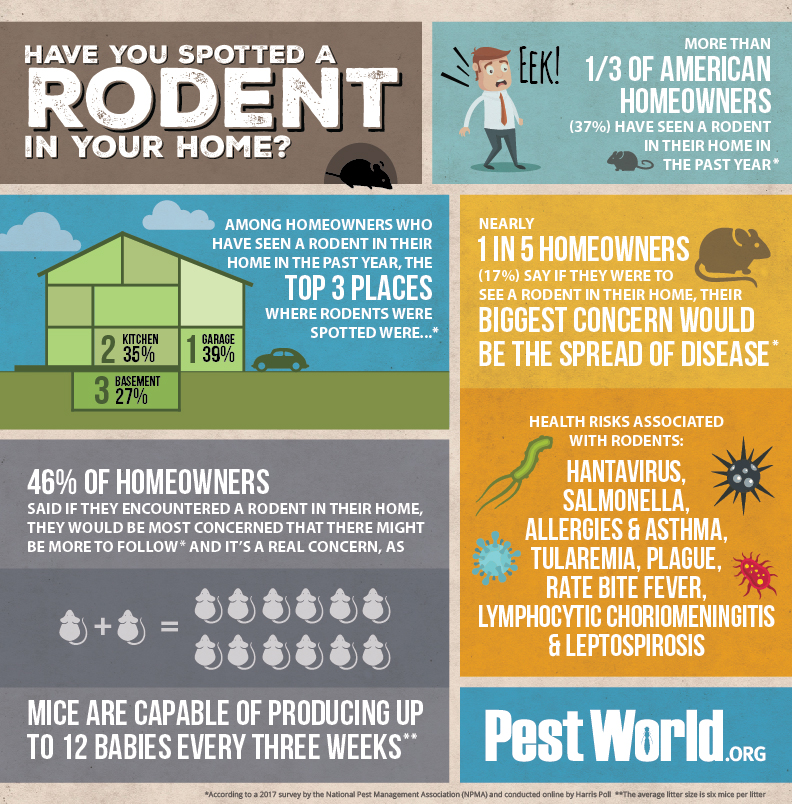Rodent-Proofing Your Attic: Essential Tips For Homeowners
Rodent-Proofing Your Attic: Essential Tips For Homeowners
Blog Article
Short Article Author-Ellegaard Snedker
Imagine your attic room as a cozy Airbnb for rodents, with insulation as fluffy as resort pillows and circuitry more luring than space solution. Now, think of these undesirable guests tossing a wild celebration in your home while you're away. As a homeowner, ensuring your attic is rodent-proof is not just about satisfaction; it's about protecting your property and liked ones. So, what straightforward steps can you require to secure your haven from these furry trespassers?
Evaluate for Access Points
To begin rodent-proofing your attic, examine for entry factors. Beginning by carefully examining the exterior of your home, searching for any kind of openings that rats might use to get to your attic. Check for spaces around utility lines, vents, and pipes, as well as any kind of splits or openings in the structure or home siding. See to it to pay attention to areas where different building materials meet, as these prevail access points for rodents.
Additionally, inspect the roof for any kind of harmed or missing tiles, along with any voids around the edges where rodents might press through. Inside visit the next web site , look for signs of existing rodent activity such as droppings, ate wires, or nesting materials. Make use of a flashlight to extensively inspect dark corners and concealed spaces.
Seal Cracks and Gaps
Examine your attic completely for any type of splits and spaces that require to be sealed to stop rats from entering. Rats can press via also the tiniest openings, so it's crucial to seal any type of potential entrance points. Check around pipes, vents, cable televisions, and where the walls satisfy the roof covering. Utilize wasp removal near me of steel woollen and caulking to seal these openings effectively. Steel wool is a superb deterrent as rodents can't eat through it. Ensure that all spaces are snugly sealed to refute accessibility to undesirable bugs.
Do not neglect the relevance of sealing gaps around doors and windows too. Use climate removing or door moves to secure these areas effectively. Inspect the locations where utility lines get in the attic room and seal them off utilizing a suitable sealant. By putting in the time to seal all splits and spaces in your attic, you produce a barrier that rodents will find difficult to breach. Avoidance is key in rodent-proofing your attic room, so be detailed in your efforts to seal any kind of potential entry factors.
Remove Food Resources
Take positive measures to get rid of or save all potential food sources in your attic to prevent rodents from infesting the area. Rodents are attracted to food, so removing their food sources is important in keeping them out of your attic room.
Right here's what you can do:
1. ** Store food safely **: Stay clear of leaving any type of food items in the attic room. Store all food in impermeable containers made from steel or durable plastic to avoid rodents from accessing them.
2. ** Clean up debris **: Remove any heaps of particles, such as old newspapers, cardboard boxes, or timber scraps, that rats could make use of as nesting product or food resources. Keep the attic room clutter-free to make it less enticing to rodents.
3. ** Dispose of waste effectively **: If you utilize your attic for storage space and have waste or waste up there, make certain to take care of it frequently and appropriately. Rotting garbage can attract rodents, so maintain the attic room tidy and free of any natural waste.
Verdict
To conclude, bear in mind that an ounce of prevention is worth a pound of treatment when it involves rodent-proofing your attic.
By putting in the time to inspect for access factors, seal splits and gaps, and eliminate food resources, you can keep undesirable bugs away.
Bear in mind, 'An ounce of avoidance is worth a pound of treatment' - Benjamin Franklin.
Remain proactive and shield your home from rodent invasions.
